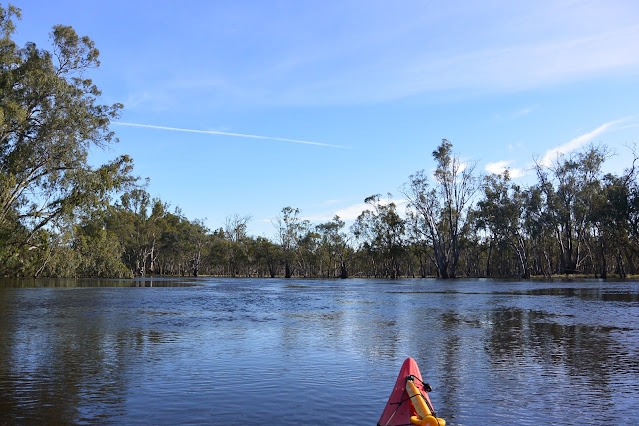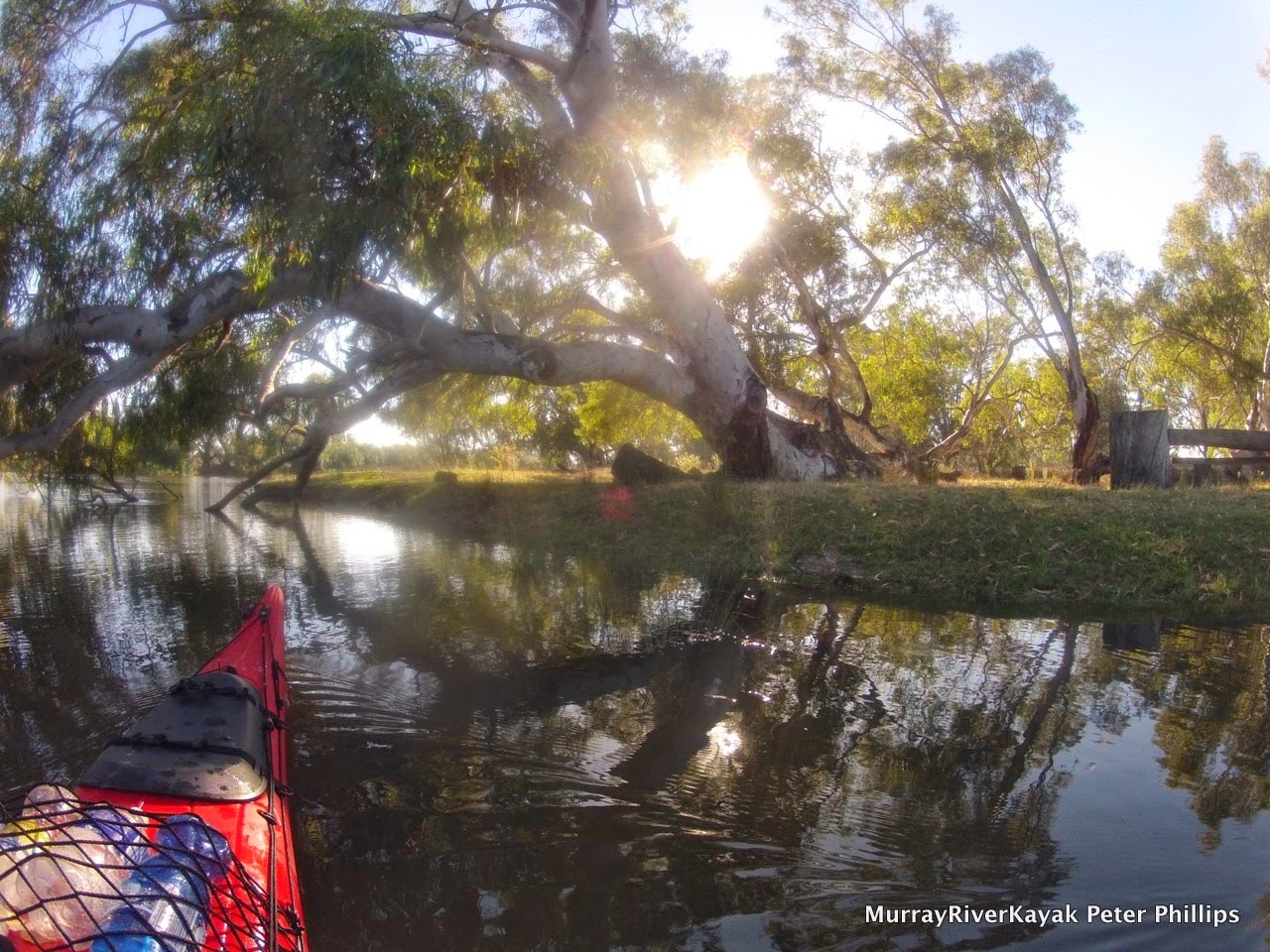Tooleybuc to Narrung
Tooleybuc in the morning was busy with backpackers getting ready for work. I thought I was up early at six, but it turns out that 6 am is the standard time for the start of work in Tooleybuc. Country time doesn't run slow when it comes to getting a start to the day. When the sun rises, work starts and it doesn't stop till it sets.
As I packed up my tent, young Malaysian fellas donned their very Aussie looking fluro work shirt's and waited for a lift to their farm and as I carried my gear down to the river, minibus after minibus and old car after old car full of backpackers passed by.
From Tooleybuc to the Wakool Junction, the river runs almost due North and without the characteristic meanders of most of its journey to the sea. There must be some sort of geological reason for this: a clue might be found in the large parallel sand dunes which run along to the river towards Goodnight. The sandunes are around 15m high and according to Justin, a Narrung local, you have it made if you have them on your land. It's where the orange, almond, olives and grapes are planted. Justin informed me that most of Cobram Oil produce comes from here. The factory is in Cobram, but the trees are grown on red mallee soil.
The first black box have begun to appear on the edge of the river red gum is since generally appear to be in good health. During the day, their number increased until they occupied stands in both sides of the river.
From Tooleybuc onwards the Murray seems to be increasingly influenced by the high level of the Edward Wakool system. There is no noticeable current 10 km out of Tooleybuc and water has reached the top of the bank and is overflowing into the surrounding countryside.
About 12 km from the junction with the Wakool river, the first dead fish began to appear: first the smaller ones, I didn't expect this, then the larger ones. Given the lack of current I thought the northerly winds had pushed them up here, but perhaps they swam here but died of exhaustion.
I was prepared for swirling currents when I finally reached the Wakool Junction, but the river was calm. There were even signs of bank on the NSW side. What had I been worried about? I photographed the channel I had just left and compared it to the one I was about to enter. The curent picked up after the Wakool junctions. It was good to have that helping hand once more.
 |
| Fast flow through redgums aerating the oxygen starved river water. |
At Narrung I found a quiet little spot under some black box and had just set about making dinner when farm ute pulled up and Justin (adjacent whose property I had camped( pulled up with an esky full of beer - to share! I did not return to my meal until much later - 3 cans, 4 fresh eggs, a farm tour, family introductions and an invitation to use their spare room should I ever come by again another time. Talk about country hospitality!
The sun set as I ate my dinner, warmed by the experience and sleepy after the beers, I crawled into my tent and allowed evening to fall.



























































